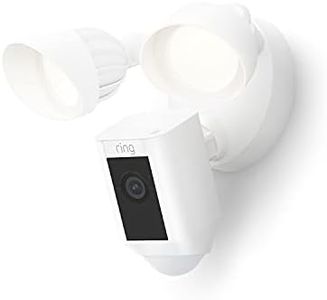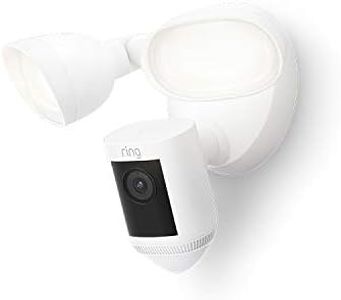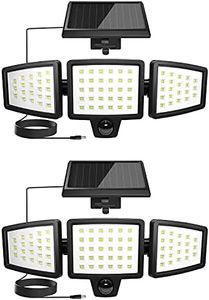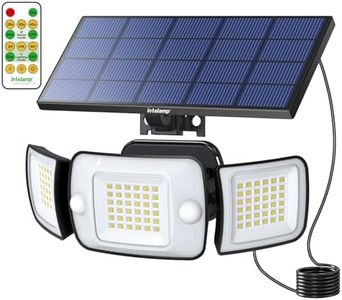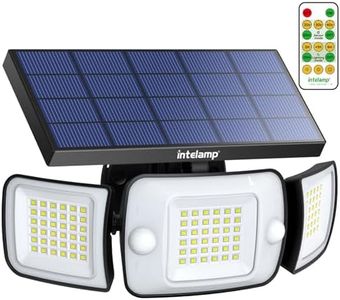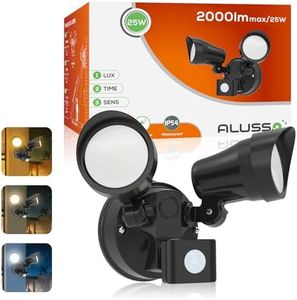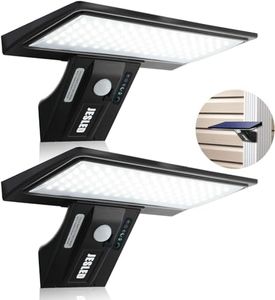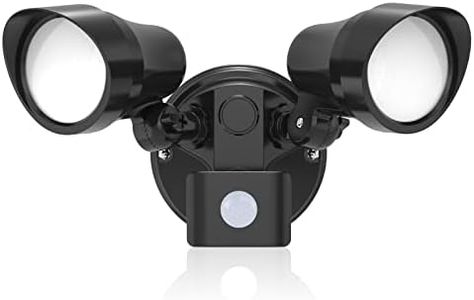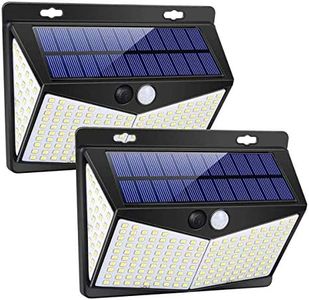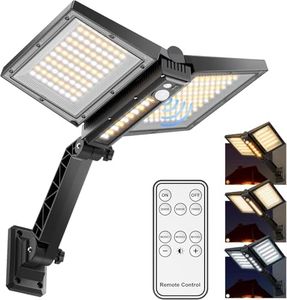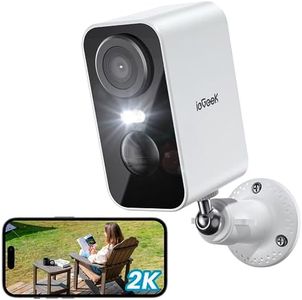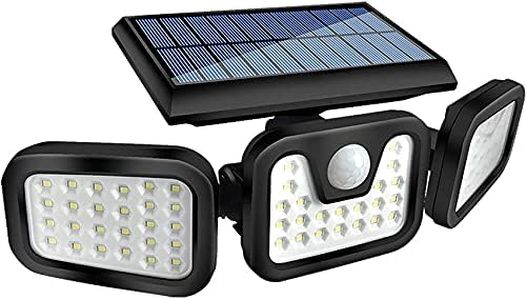We Use CookiesWe use cookies to enhance the security, performance,
functionality and for analytical and promotional activities. By continuing to browse this site you
are agreeing to our privacy policy
10 Best Motion Detector Flood Lights
From leading brands and best sellers available on the web.Buying Guide for the Best Motion Detector Flood Lights
When choosing a motion detector flood light, your goal should be to find a product that lights up your outdoor area efficiently and detects motion reliably. These lights help improve security, make it easier to navigate at night, and save energy by only turning on when they're needed. To choose the best one, you need to understand the main technical features and how they impact the light's performance. Your own needs—such as area size, wanted brightness, and where you plan to install it—will help guide your decision. Below are the key specifications to focus on, along with what they mean and how to pick the right options for your situation.Detection RangeDetection range tells you how far away the motion sensor can spot movement. This is important because it directly determines how much of your outdoor space will be protected. Ranges often vary from about 10 to over 70 feet. If you’re guarding a small entryway or balcony, a shorter range is fine so it doesn’t pick up unnecessary motion. For a big driveway or yard, look for longer ranges to cover more area. Think about how far from the light you want it to trigger—if the light is too sensitive or too limited, it may either turn on too often or miss important activity.
Detection AngleDetection angle indicates how wide of an area the sensor can cover. A narrow angle (for example, 90 degrees) is good if you want to focus on a pathway or a specific spot without picking up passing cars or distant movement. A wide angle (like 180 degrees or more) helps cover larger or multiple areas, such as two sides of a house corner or a broad yard. Think about what you need to monitor and choose an angle that fits—too wide and you may get unwanted triggers, too narrow and you might not cover all you want.
Brightness (Lumens)Brightness is measured in lumens, telling you how much light the floodlight will provide. Lower lumens (around 700-1000) are enough for smaller areas or just lighting up steps, while higher lumens (2000 and up) are better for illuminating large yards or enhancing security. Think about how much light you need—not just for seeing, but for making the area look unwelcoming to intruders. Too bright can be overkill for residential zones, while too dim leaves blind spots.
Light Source TypeLight source type usually means choosing between LED, halogen, or other options. LEDs are now the common choice because they're energy efficient, last much longer, and need less maintenance. Halogen bulbs are brighter for their size but use more power and burn out faster. For almost all purposes—especially if you want to 'install and forget'—go with LED, but if you have very specific preferences, consider the other options and be ready for more frequent replacement.
Adjustable Sensitivity and TimerMany motion detector flood lights let you adjust how sensitive the sensor is and how long the light stays on after motion is detected. Sensitivity adjustment lets you prevent it from going off because of small animals or passing traffic. Timer settings often range from a few seconds up to several minutes, so you can control whether the light turns off quickly or stays illuminated for longer after motion. Think about how often you want the light to come on and for how long, based on your daily habits and how busy your area is.
Weather Resistance (IP Rating)Weather resistance, shown as an IP (Ingress Protection) rating, tells you how well the light can survive rain, dust, and other elements. This matters a lot if you’re installing the light outdoors in a spot with little cover. Higher IP ratings (like IP65 or IP66) mean excellent resistance to water jets and dust, suitable for most outdoor environments. If your light will be exposed directly to harsh weather, aim for a high rating—if it’s under a roof or eave, lower ratings may be fine.
Power SourceFloodlights can be hardwired into your home's electrical system, plugged into an outlet, or powered by solar panels. Hardwired lights are more permanent and reliable, while plug-in models are easier to install but may need outdoor-rated outlets nearby. Solar-powered options are easiest to place and save on electricity, but depend on good sun exposure for reliable lighting. Your chosen installation spot and your willingness (or ability) to do electrical work will help determine the best option for you.
